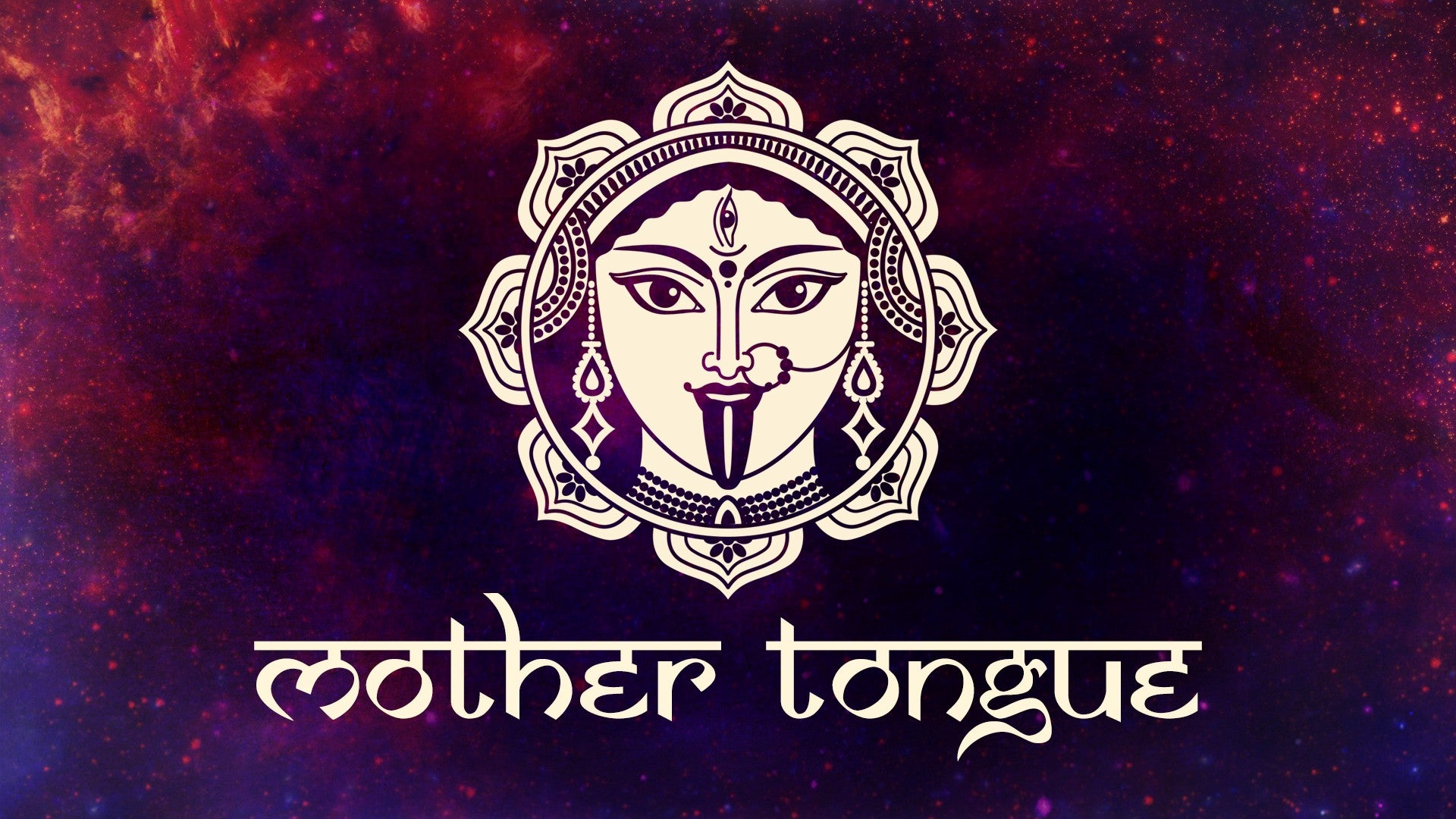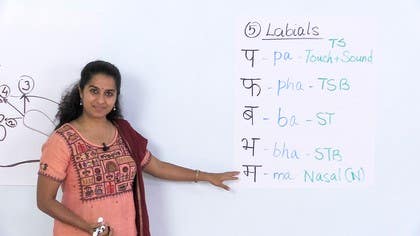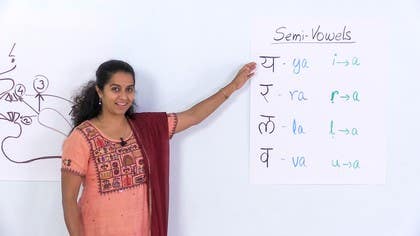Description
About This Video
Transcript
Read Full Transcript
Namaste and welcome back again. We are now in the last series of our consonants. Thus far we have watched or seen what the sounds look like for the guttural, the palatas, the cerebras, the dentals and now we are on our final lap. We have the labials. There are five of them. The first is touch sound so got that. The second has a breath to it. The third is sound and then touch. This one's easy. The fourth sound is the that's a little tougher. Very often one tends to just do the breath without the sound at the end like the remember to add the vowel. So it's the bar and then we have the nasal. So with these five sounds let's see what they look like. We have the labials. The first one was touch sound corresponding to the letter or the sound per. That is the per. It's interesting because it looks like the English P but the reverse of it. Per. In transliteration or the equivalent in the Roman script it is the P and an A. Very direct correspondence and then it corresponds to the mechanism of touch and sound. There you are. Okay let's say that together. Per. Per. Very good. The next letter is a sound per. Per. Again per. It looks like that. It's the P the per with a tail per. Say that per. In Roman script or the transliteration it's represented with the P H and A. Just be careful not to pronounce this as the for but this is the per. In terms of the mechanism of the sound it is the touch sound and breath. Between us we will keep the code of T and S to correspond to touch and sound. So this one is touch sound and breath. Now the third letter is the reverse of touch and sound. It's sound touch. B. Putting it together. Let's see what it looks like. This one actually corresponds to the word baby a little bit because it's like the pregnant woman whose stomach has been cut and the baby comes out. It is an easy one to remember that way. Okay that's the b. In terms of the transliteration it is the B and then A. It corresponds to sound touch. Let's say that together. Lovely. The fourth letter is the same sound touch combination with your breath. It is the b. And this is what it looks like. That is the b. In English or in the transliterated form it is represented by b, h and a. In terms of the mechanism of sound it's sound touch with the breath. That's it. B. Lovely. And the final letter in the series is the nasalized labial which is the m. It looks like a close cousin of the b and easy to remember. The line goes all the way through. This is the m. In transliteration it's represented by the m and a. In terms of the mechanism it is the nasal. Yeah. Got that? That's the m. Now let's say the letters once together. B, p, b, b, m.
Once more. P, p, b, b, m. Yeah. Now it's your turn. Fabulous. For a last time can we say it together? P, p, b, b, m. Beautiful. Just stay with these sounds, practice them and the sounds will get you.







You need to be a subscriber to post a comment.
Please Log In or Create an Account to start your free trial.